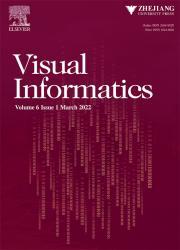FlowLLM:大型语言模型驱动的流可视化
IF 3.8
3区 计算机科学
Q2 COMPUTER SCIENCE, INFORMATION SYSTEMS
引用次数: 0
摘要
流场可视化是领域专家直观地理解和分析流场的重要工具。在过去的几十年里,开发了各种交互技术来定制用于勘探的流可视化。然而,这些技术通常使用专门设计的图形界面,需要大量的学习和使用工作。最近,FlowNL Huang等人(2023)引入了一种自然语言接口来减少工作量,但由于缺乏领域知识,它仍然与自然语言歧义作斗争,并且在对话中提供有限的理解上下文的能力。为了解决这些问题,我们提出了一个探索性的流程可视化,该可视化由一个与用户交互的大型语言模型提供支持。我们的方法利用广泛的流相关查询数据集来训练模型,增强其解释广泛的自然语言表达和在多回合交互中维护上下文的能力。此外,我们引入了一个先进的对话管理系统,支持用户和系统之间的交互式连续通信。我们的实证评估表明,在用户参与度和流结构提取的准确性方面有显著的改进。这些增强对于扩展流可视化系统在现实世界中的适用性至关重要,在现实世界中,有效和直观的用户界面是至关重要的。本文章由计算机程序翻译,如有差异,请以英文原文为准。
FlowLLM: Large language model driven flow visualization
Flow visualization is an essential tool for domain experts to understand and analyze flow fields intuitively. In the past decades, various interactive techniques were developed to customize flow visualization for exploration. However, these techniques usually use specifically designed graphical interfaces, requiring considerable learning and usage effort. Recently, FlowNL Huang et al., (2023) introduces a natural language interface to reduce the effort, but it still struggles with natural language ambiguities due to the lack of domain knowledge and provides limited ability to understand the context in dialogues. To address these issues, we propose an explorative flow visualization powered by a large language model that interacts with users. Our approach leverages an extensive dataset of flow-related queries to train the model, enhancing its ability to interpret a wide range of natural language expressions and maintain context over multi-turn interactions. Additionally, we introduce an advanced dialogue management system that supports interactive continuous communication between users and the system. Our empirical evaluations demonstrate significant improvements in user engagement and accuracy of flow structure extraction. These enhancements are crucial for expanding the applicability of flow visualization systems in real-world scenarios, where effective and intuitive user interfaces are paramount.
求助全文
通过发布文献求助,成功后即可免费获取论文全文。
去求助
来源期刊

Visual Informatics
Computer Science-Computer Graphics and Computer-Aided Design
CiteScore
6.70
自引率
3.30%
发文量
33
审稿时长
79 days
 求助内容:
求助内容: 应助结果提醒方式:
应助结果提醒方式:


